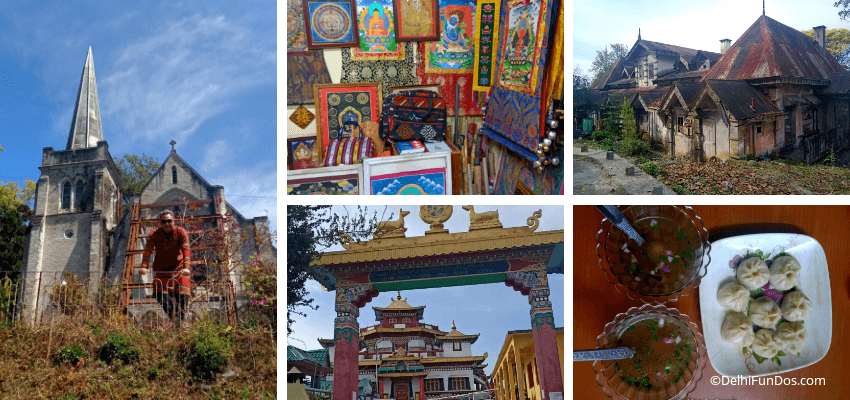
Venue: Kalimpong, West Bengal
“It was the best of times, it was the worst of times”
– Charles Dickens, A Tale of Two Cities
It is the first week of the lockdown phase and all we can do it travel down the memory lane. Last year this time we were at Kalimpong. Kalimpong is a hill town mere 2 hours’ drive from Siliguri. Childhood memories of this place remind one of us of colourful flowers of unknown varieties. This was his second visit and this time it was a travel cum food story. To give a brief background, we had dined at Monsoon by Café Lota in Delhi but the experience was a little incomplete since we did not have the Kalimpong cheese salad. Apparently the restaurant did not get supplies of this ingredient any more. But we had heard so much about Kalimpong cheese, we just had to have it. Ages back, Kalimpong cheese was widely available in New Market, Kolkata. But of late, to our utter disappointment, it had dwindled from the shelves here as well. The only way now to check out and, if possible, taste Kalimpong cheese was in Kalimpong and we travelled on this cheesy expedition! And so it was basically the Kalimpong cheese that got us to Kalimpong. Kalimpong is a serene and quaint hill town with relaxed vibes and great view of Shivalik Himalayas. We looked for cheese and did other things in Kalimpong. Based on our experience here is a tour guide to Kalimpong, the lesser known hill station in West Bengal.
Contents
Where is Kalimpong?
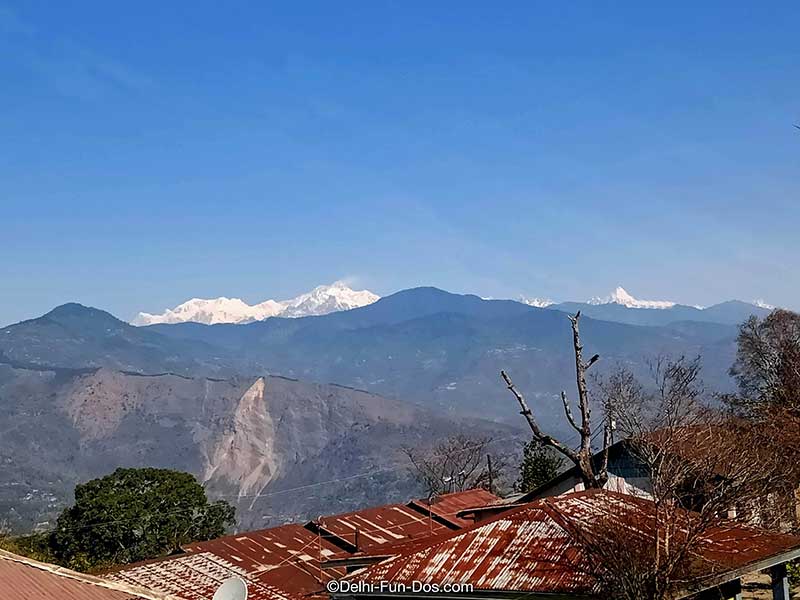 The Himalayas spread from the far east to the north of India. There are innumerable hill stations on the length and breadth of Himalayas and some of them are famous. Kalimpong, in comparison is the proverbial underdog. Hence while we have travelled and posted about Shimla, Manali, Chail, Lansdowne, Mount Abu that is on the Aravalli hills, so on and so forth, it took us way more time to come to the hill side of West Bengal. Kalimpong is located in the northern part of West Bengal in the eponymous district Kalimpong that was recently formed in the year 2017. It has a long history that runs back few centuries. Kalimpong was ruled by Sikimese and Bhutanese kingdoms and later came under the governance of the East India Company. Thus it was integrated to India. Thereafter the city developed under British patronage and was a hub of colonial era residential schools and theology centres.
The Himalayas spread from the far east to the north of India. There are innumerable hill stations on the length and breadth of Himalayas and some of them are famous. Kalimpong, in comparison is the proverbial underdog. Hence while we have travelled and posted about Shimla, Manali, Chail, Lansdowne, Mount Abu that is on the Aravalli hills, so on and so forth, it took us way more time to come to the hill side of West Bengal. Kalimpong is located in the northern part of West Bengal in the eponymous district Kalimpong that was recently formed in the year 2017. It has a long history that runs back few centuries. Kalimpong was ruled by Sikimese and Bhutanese kingdoms and later came under the governance of the East India Company. Thus it was integrated to India. Thereafter the city developed under British patronage and was a hub of colonial era residential schools and theology centres.
How to reach Kalimpong
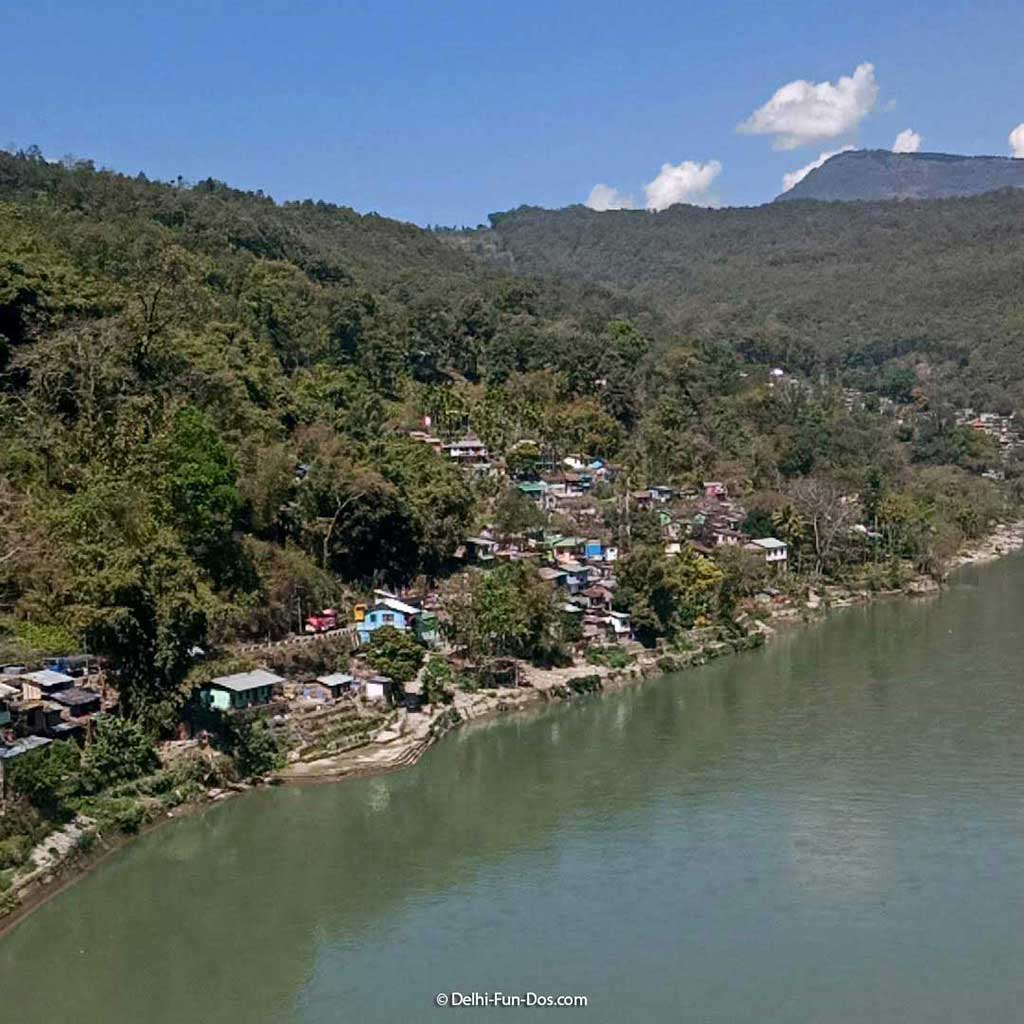 Kalimpong is well connected by roads. At a comfortable altitude of 1250 m approximately, it is an easily motorable destination. However, if you are coming from far, public transport may be a more suitable option. The nearest airport is at Bagdogra about 70 km away. The nearest railway station is New Jalpaiguri (NJP) in Siliguri city about 75 km away. It takes about 2 hours by taxi from Bagdogra or Siliguri to reach Kalimpong and the roads are in good shape. One can also take a long distance bus from Siliguri for Kalimpong. In fact, shared taxis are also available from Tenzing Norgay Bus Stand and various other points of Siliguri to ferry passengers to Kalimpong. To sum it up, reaching Kalimpong is easy and the journey is pleasant. All along the way from Siliguri you have many rivers, first Mahananda and then the beautiful Teesta for company. They flow alongside the mountain roads.
Kalimpong is well connected by roads. At a comfortable altitude of 1250 m approximately, it is an easily motorable destination. However, if you are coming from far, public transport may be a more suitable option. The nearest airport is at Bagdogra about 70 km away. The nearest railway station is New Jalpaiguri (NJP) in Siliguri city about 75 km away. It takes about 2 hours by taxi from Bagdogra or Siliguri to reach Kalimpong and the roads are in good shape. One can also take a long distance bus from Siliguri for Kalimpong. In fact, shared taxis are also available from Tenzing Norgay Bus Stand and various other points of Siliguri to ferry passengers to Kalimpong. To sum it up, reaching Kalimpong is easy and the journey is pleasant. All along the way from Siliguri you have many rivers, first Mahananda and then the beautiful Teesta for company. They flow alongside the mountain roads.
What is the best time to visit Kalimpong?
As we mentioned above, Kalimpong is at a very convenient altitude that is not too high to be bitterly cold, nor at the plains to be warm. Given that this hill station is in the lap of Himalayas, the weather throughout the year is neither too hot nor too cold, but pleasant. Kalimpong is therefore round the year destination. Summers are mild and winters could get somewhat chilly but not something that slightly heavy woolens and scarves cannot handle. The monsoon is active here and there are some chances of landslides in this season.
Why is Kalimpong famous?
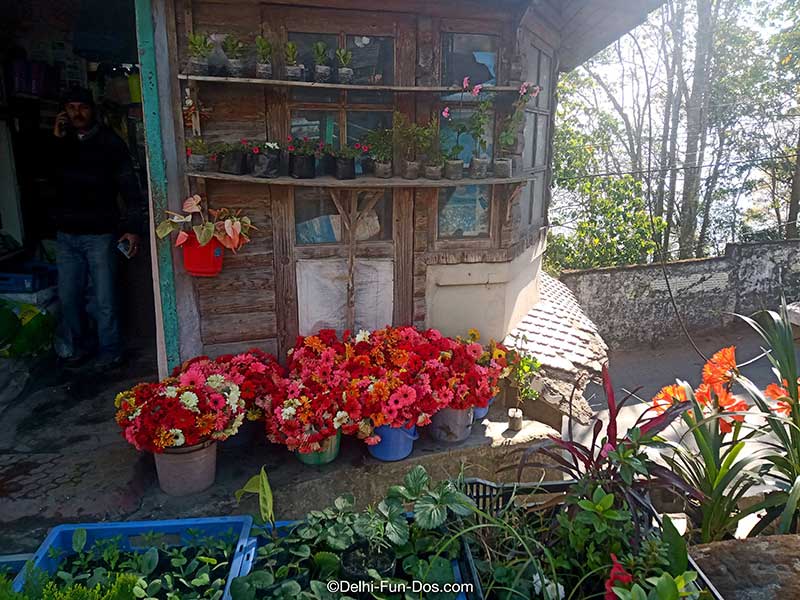 Kalimpong has a long history being integral to Bhutanese and Sikkimese royal families. Overtime it emerged as a travel destination for people from surrounding areas as well as travel crazy Bengalis. Darjeeling, the queen of hill stations, is still the most sought after hill travel destination in West Bengal. However, Darjeeling has suffered from political unrest. In stable times it is the victim of over tourism. Many travellers looking for peace and serenity in the mountains therefore come to Kalimpong. Kalimpong is less crowded, way serene and slow. Hence it is popular among suckers for slow travel.
Kalimpong has a long history being integral to Bhutanese and Sikkimese royal families. Overtime it emerged as a travel destination for people from surrounding areas as well as travel crazy Bengalis. Darjeeling, the queen of hill stations, is still the most sought after hill travel destination in West Bengal. However, Darjeeling has suffered from political unrest. In stable times it is the victim of over tourism. Many travellers looking for peace and serenity in the mountains therefore come to Kalimpong. Kalimpong is less crowded, way serene and slow. Hence it is popular among suckers for slow travel.
Top things to do in Kalimpong
Yet it is not all sleeping on the hammock only. There are many tourist sites in Kalimpong and surrounding mountains that are worth visit. But we were in Kalimpong mostly to relax and soak in the nature. We just covered those places that were in Kalimpong and were of interest to us. Here is a list.
Graham’s Church, Kalimpong
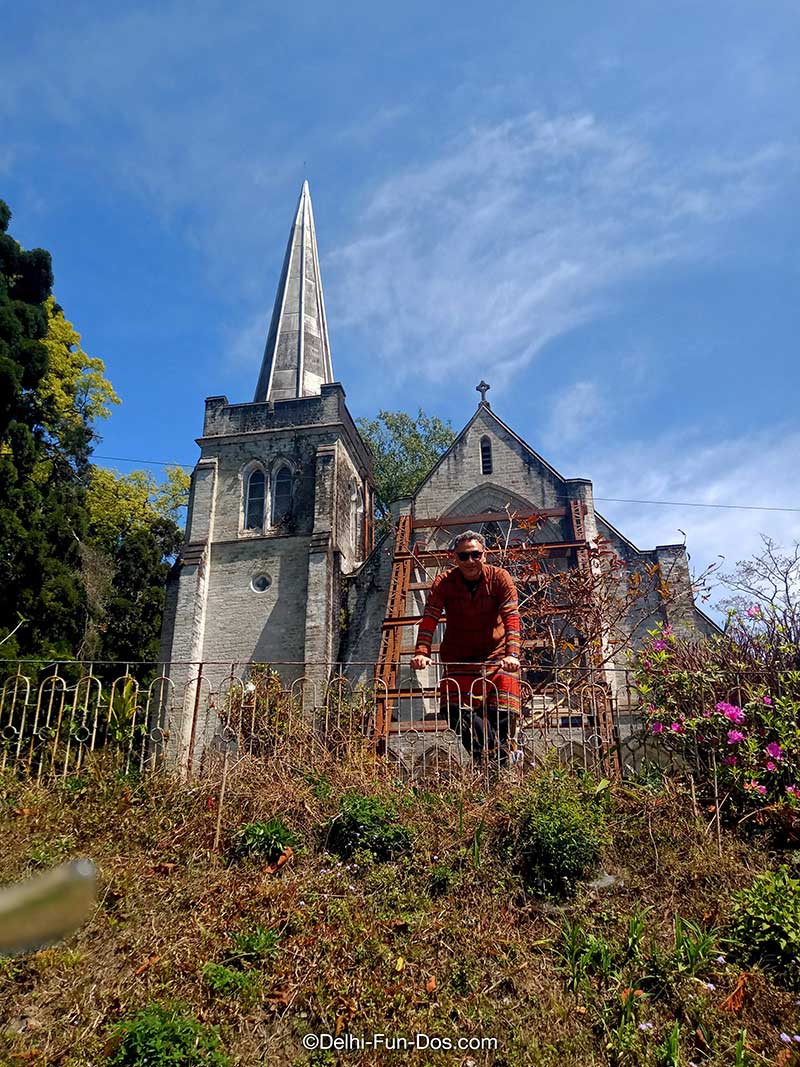 This is an early 1900s chapel set up in the premise of Graham’s School, a missionary residential educational institution in Kalimpong. The architecture of the church is a fusion between dream and reality. The church bell takes us to fairytales while the smart façade and the almost industrial tower of the church is a very contemporary design. The church is in a rather forlorn condition and has solid scaffolding holding up the structure. Yet it is not difficult to imagine how this magnificent House of God would look in full glory. Flower gardens surround the church and we took some photos here.
This is an early 1900s chapel set up in the premise of Graham’s School, a missionary residential educational institution in Kalimpong. The architecture of the church is a fusion between dream and reality. The church bell takes us to fairytales while the smart façade and the almost industrial tower of the church is a very contemporary design. The church is in a rather forlorn condition and has solid scaffolding holding up the structure. Yet it is not difficult to imagine how this magnificent House of God would look in full glory. Flower gardens surround the church and we took some photos here.
Zang Dhok Palri Phodang or Durpin Monastery, Kalimpong
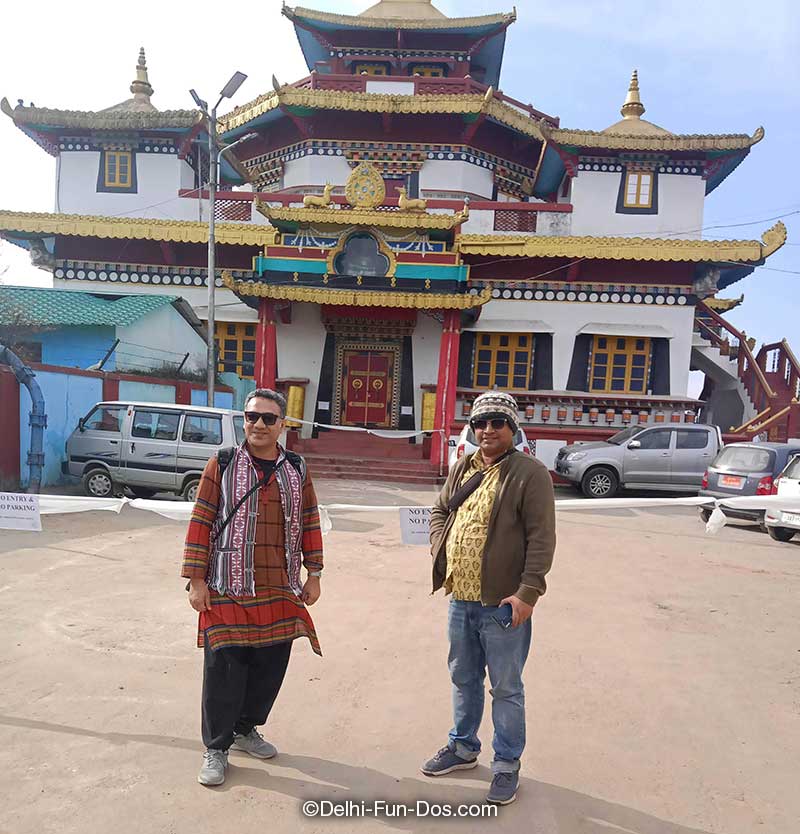 Zang Dhok Palri Phodang in Kalimpong is a Tibetan Buddhist monastery consecrated by His Holiness Dalai Lama in the year 1976. It is like a majestic palace in white, red and gold. Exquisite paintings adorn the inside walls while colourful prayer flags flutter all around the area. The shrine evokes a strong sense of peace. Lamas clad in their maroon dye robes tiptoe around making sure devotees are not disturbed. Perched up on Durpin Hill, this shrine is also known as Durpin Monastery or Lava Monastery. One can get beautiful views of Kalimpong town from here.
Zang Dhok Palri Phodang in Kalimpong is a Tibetan Buddhist monastery consecrated by His Holiness Dalai Lama in the year 1976. It is like a majestic palace in white, red and gold. Exquisite paintings adorn the inside walls while colourful prayer flags flutter all around the area. The shrine evokes a strong sense of peace. Lamas clad in their maroon dye robes tiptoe around making sure devotees are not disturbed. Perched up on Durpin Hill, this shrine is also known as Durpin Monastery or Lava Monastery. One can get beautiful views of Kalimpong town from here.
Mangal Dham, Kalimpong
Mangal Dham is a Hindu temple in Kalimpong in memory of Guru Mangaldas Ji of the Pranami Sect of Hinduism. What surprised us are the sprawling structure and the sparkling cleanliness of the temple and the various associated quarters. Well maintained gardens and flower beds surrounded the area. The shrine in the sanctum sanctorum housed clothes and other symbols such as crown and flute representing Lord Krishna and ornaments and flowers for divine consort Radha. The followers of this sect refrain from idol worship.
Gauripur House, Kalimpong
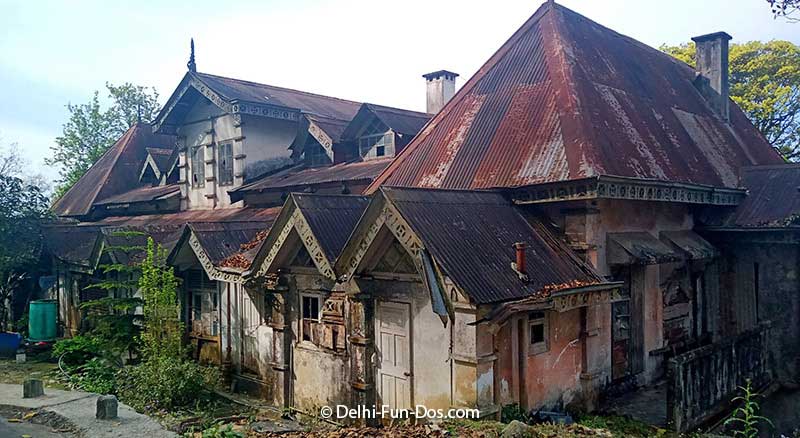
Gurudev Rabindranath Tagore would frequently visit the hills and stay at many places. While he spent most time in Mangpoo not far from Kalimpong, he also spent substantial time at Gauripur House in Kalimpong. This is a beautiful edifice and the architecture with country house flavour is plain marvelous. The building is in dilapidated condition yet whatever remains is still suggestive of how beautiful this mansion would have been in it’s hey days. There was no caretaker and we just walked through empty rooms. The stately fireplaces in every room and whatever remained of the multi coloured stained glass windows made us wistful that someone did something in restoring this beautiful house. Apparently Gauripur House is under the aegis of the Heritage Commission but is definitely not on their priority list.
Morgan House, Kalimpong
Morgan House is a multi storied mansion built by George Morgan in circa 1930. The estate is spread over 16 acres atop Dupin Hill and the structure is most imposing. This is now a guest house managed by the Tourism Department of Government of West Bengal. The area is calm and serene and a little distant from Kalimpong bus stand that is the hub of action in this city.
What to eat in Kalimpong
Kalimpong has a mixed population comprising Nepalis, Bhutias, Bengalis, Punjabis and so on. So getting food from popular cuisine is not a problem. That said, there are few items that are unique to the Himalayan culture of North Bengal. And we have not come across many of these items in the Himalayas of Himachal Pradesh or even in Delhi. This made our Kalimpong food trail so worthwhile.
Kalimpong cheese
 Top of this list is the rare Kalimpong cheese.
Top of this list is the rare Kalimpong cheese.
Kalimpong cheese was brought to this city by a priest Brother Abraham who missed the Gouda cheese and wanted to make a similar cheese variety here. Kalimpong cheese is light yellow in colour with a darker yellow rind. It is hard and crumbly with a sharp acidic flavour and distinctive nutty taste that reminded us of Gouda cheese. Kalimpong cheese tasted great on its own, on salads and sandwiches and crackers. It was very different from the soft ricotta like Bandel cheese that we have had in Kolkata. Kalimpong cheese was available in wheel like blocks and we carried some back with us. The shop owner shared the trivia that Kalimpong cheese tasted best when ripened for 3 to 4 months.
We also came to know that given the lack of skill and demand, the production of Kalimpong cheese had dwindled over time. Therefore whatever cheese that was produced was sold only in Kalimpong and was not even transported to the state capital Kolkata. The cheese that we bought was made in the nearby Gitabling village. Our trip sort of reached fulfillment after we had found Kalimpong cheese. Given the delightful flavour and taste, we are willing to do it all over again!
Chhurpi
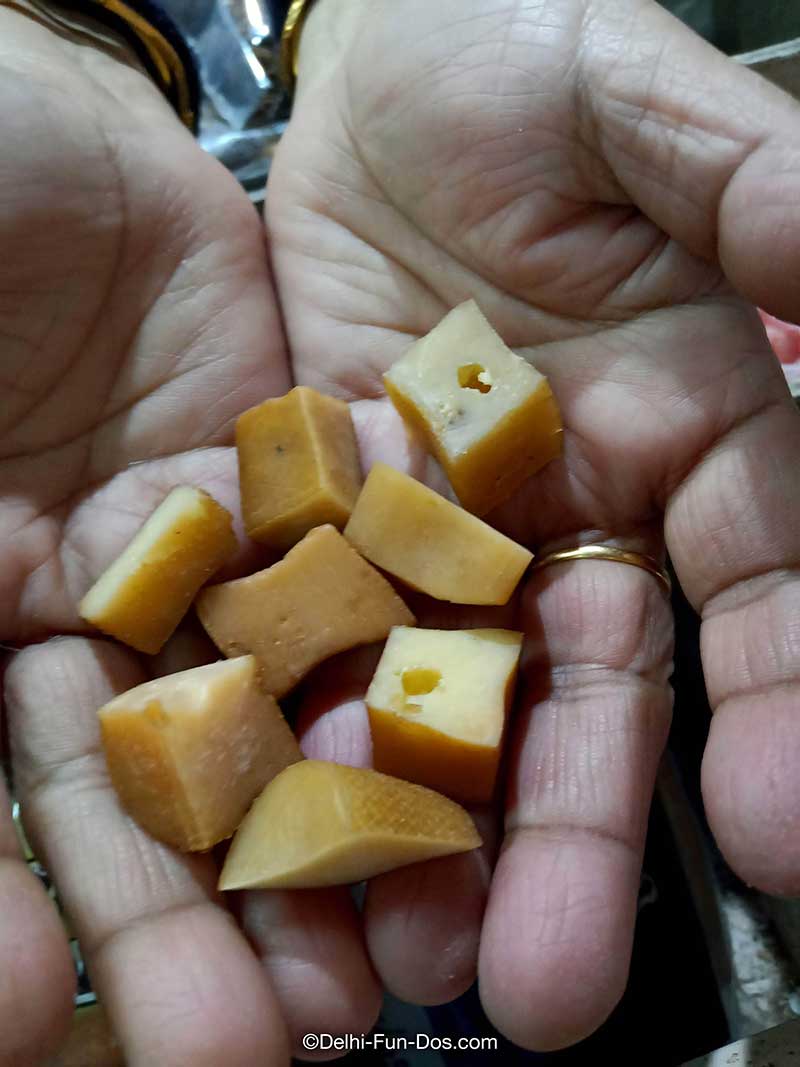 This is a traditional variety of cheese available in the hills of North Bengal. Customarily prepared from yak milk (now cow milk is also used), chhurpi cheese is hard like beetle nut or supari and has to be chewed for sometime before the cheese releases juices in the mouth. The taste of chhurpi is neutral and locals in Kalimpong suck cubes of chhurpi, throughout the day, like a habit or an addiction. Chhurpi is an acquired taste that is beneficial since this cheese is high in protein and has great nutritive value.
This is a traditional variety of cheese available in the hills of North Bengal. Customarily prepared from yak milk (now cow milk is also used), chhurpi cheese is hard like beetle nut or supari and has to be chewed for sometime before the cheese releases juices in the mouth. The taste of chhurpi is neutral and locals in Kalimpong suck cubes of chhurpi, throughout the day, like a habit or an addiction. Chhurpi is an acquired taste that is beneficial since this cheese is high in protein and has great nutritive value.
Kalimpong lollipop
Another delectable pleasure of visiting Kalimpong is Kalimpong lollipops. Started by the Swiss Jesuit priest Father Andre Butty in 1950s, these light brown milky sweet sticks are still a huge draw. The flavour is buttery, like thickened milk and we could not just stop at one. These were available in packets and were great souvenirs for family and friends back home.
Momos
The food section would remain incomplete if we did not mention the extremely tasty momos we were having here almost 3 times every day. The momos were prepared fresh after order. The outer flour cover was thin and full of the chicken filling that somehow integrated and did not fall out after biting the momo. The seasoning was mild and so we could consume more. These were always served with clear soup, like a broth with small slices of onion and garlic in it. Momos are from the hills and from experience we can say they are best had there.
What to buy in Kalimpong
The top draws here are of course Kalimpong cheese and Kalimpong lollipops. We savoured these for months after coming home. In addition we went to the Tibetan market at 10th Mile Road, Kalimpong. This wholesale market was the supplier of various Buddhist paraphernalia to Dharmashala in Himachal Pradesh; Majnu ka Tila in Delhi and various other places in India. We wanted to take back a little bit of the distinctive Kalimpong culture with us in terms of art and craft.
Where to buy cheese in Kalimpong
It was not easy for us to locate Kalimpong cheese in Kalimpong as well. None of the dairies or big groceries we checked carried this cheese and some of them clearly had not heard about it! We finally found it at Hind Bakery at the main bus stand. We found another place but they were more expensive and the cheese blocks did not look very clean. We therefore bought our cheese from Hind Bakery and are so happy about our purchase. We also bought packets of Kalimpong lollipop from here.
Handloom fabric in Kalimpong
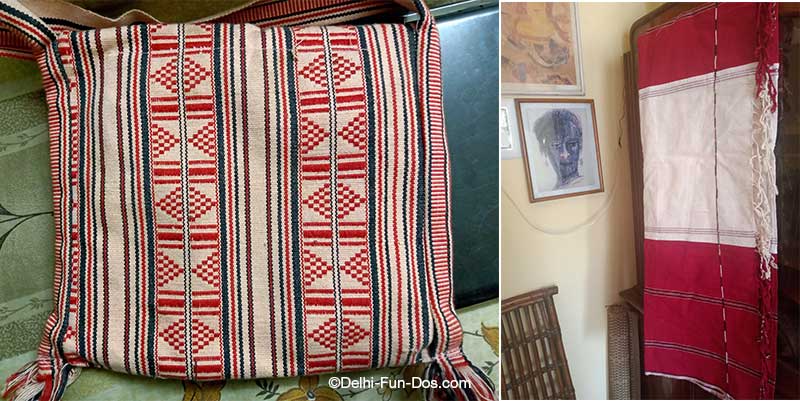 If you have marveled at the rustic weaves of the hill people, we saw these handloom fabrics here. Apparently woven in Nepal, these cotton fabrics were thick to sustain hill weather and sported colourful geometric designs. The stitched jackets and hats were smart and stylish. We also bought a distinctive shawl made from the Assamese Ahimsa Silk–Endi. These shawls were used by Buddhist monks but could set any fashion show ramp on fire!
If you have marveled at the rustic weaves of the hill people, we saw these handloom fabrics here. Apparently woven in Nepal, these cotton fabrics were thick to sustain hill weather and sported colourful geometric designs. The stitched jackets and hats were smart and stylish. We also bought a distinctive shawl made from the Assamese Ahimsa Silk–Endi. These shawls were used by Buddhist monks but could set any fashion show ramp on fire!
Thangka paintings in Kalimpong
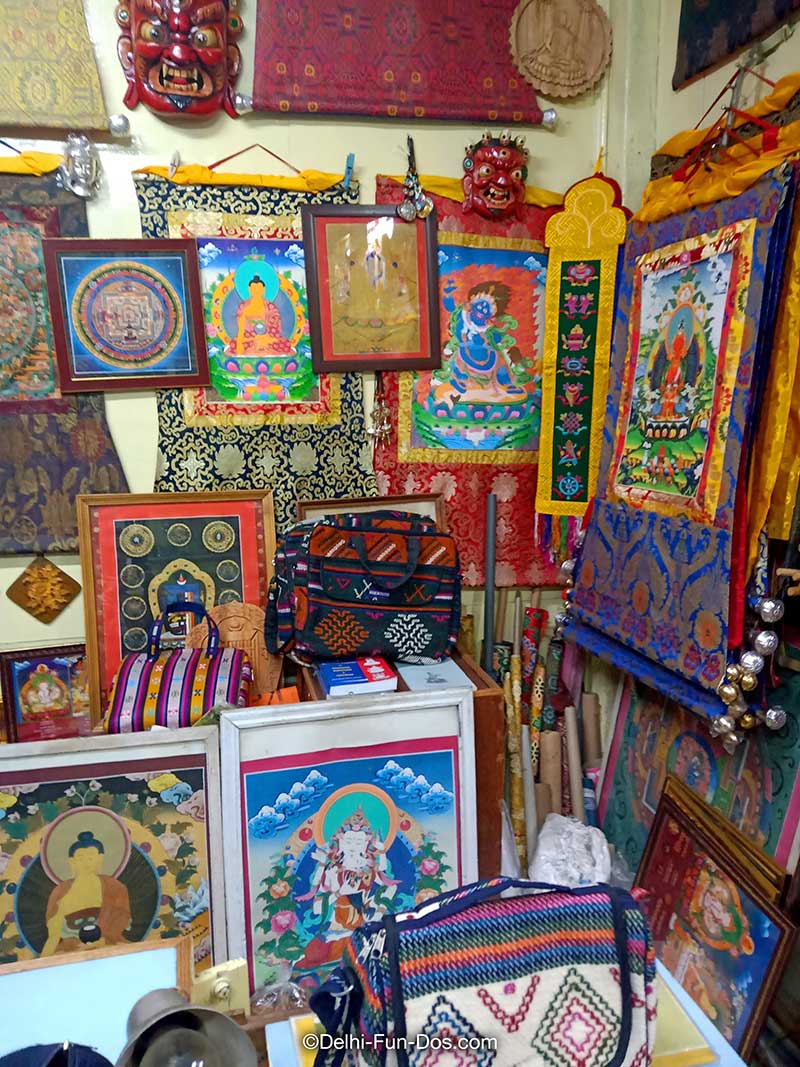 Thangkas are votive paintings depicting the life of Buddha, various Bodhisattvas and iconography associated with Buddhism. Hands painted thangkas have been almost replaced by cheaper printed versions. However we managed to find one store – Thangka House where they still manufactured traditional painted thangkas. The intricate painting with a panorama or colours and hints of gold colour were traditionally framed on silk background which added to the grandeur. We were so enamored by the beautiful art that we shunned the silk backdrop since that diverted attention and bought two of the paintings depicting Buddha’s life.
Thangkas are votive paintings depicting the life of Buddha, various Bodhisattvas and iconography associated with Buddhism. Hands painted thangkas have been almost replaced by cheaper printed versions. However we managed to find one store – Thangka House where they still manufactured traditional painted thangkas. The intricate painting with a panorama or colours and hints of gold colour were traditionally framed on silk background which added to the grandeur. We were so enamored by the beautiful art that we shunned the silk backdrop since that diverted attention and bought two of the paintings depicting Buddha’s life.
Kalimpong noodles
Bunches of homemade noodles are wrapped like rolls in a newspaper and sold at Rs. 15 a bunch. The strands of the noodles are somewhat thicker than the packaged variety we get in the market. But these were less processed and had a unique taste, more like pasta. In fact, the Government of West Bengal has recently woken up to the uniqueness of these noodles and is trying to make these available for a wider market through retail chains.
Plant nurseries in Kalimpong
The flowers and orchids of Kalimpong deserve special mention. Given the mild summers and pleasant winters, the flower beds are a riot of colours here. In fact, gardening seems to be a common hobby since we came across many nurseries sporting virtual rainbows in full bloom. There were many interesting looking indoor plants too. We carried a sapling back with us as a souvenir.
Buddhist Hindu Christian influence in Kalimpong
Kalimpong is home to people from Hindu, Buddhist, Christian and Muslim communities. The impact of all these cultures in this city was most humbling. Buddhist flags and curtains or swags adorned every household where the altar carried idols of Lakshmi, Ganesh, Shiv and other common Hindu deities. A wooden cross or poster of Jesus Christ would hang on another wall in the same room. Such harmonious and syncretic way of life perhaps contributed to the peace and serenity of the city.
Is Kalimpong worth visiting?
This is a question we faced after we were back from Kalimpong. For someone is Delhi, Himachal Pradesh and in fact Uttarakhand display the splendor of the grand Himalaya. Then why travel all the way east to Kalimpong? The answer perhaps lies in the mystery called India where craft and culture change every few kilometres. Therefore, Himalaya has a very different grandeur to show at Kalimpong. Amongst all the Himalayan ranges, the regal Kanchenjunga peak is visible in full glory from here. In addition, we saw a host of other snow-capped peaks of the Shiwalik range of Himalayas from here names of which are unknown to us. Each part of Himalaya has a different appearance and evokes awe from each location. 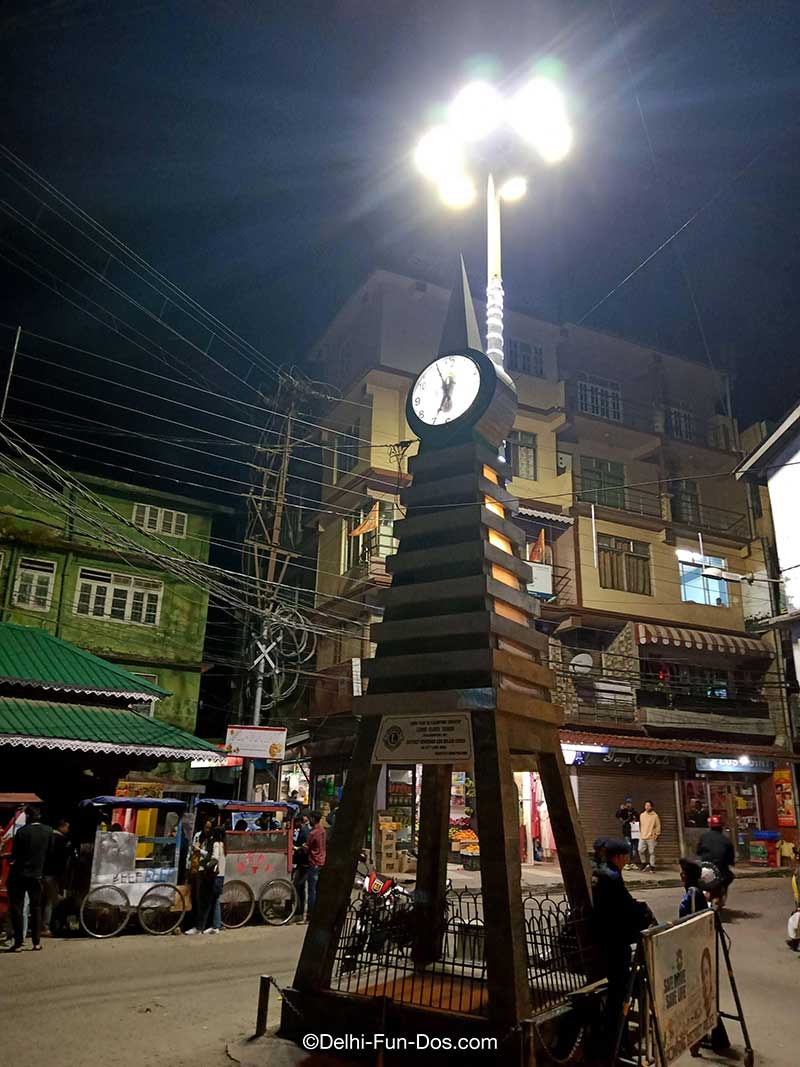 Further, the peace and solitude of Kalimpong is difficult to find in any hill station that has all facilities. The colonial era is still evident here with a smart clock tower at City Square. If one wants an active holiday, there are so many sites and locations in and around Kalimpong that one can visit. If one wants to just unwind, they can walk down the quiet roads, gaze at the sequined night sky, savour local food, and soak in the distinctive Kalimpong culture. Nice friendly easy-going folks are forever ready to chat with you. Moreover, being close to Darjeeling, the tea here is excellent. In other words, Kalimpong has so much to offer. Add to that great weather and good transport connection, decent phone and Wi-Fi network. And yes – did we mention Kalimpong cheese, lollipops, and momos. It is an idyllic setting and totally worth.
Further, the peace and solitude of Kalimpong is difficult to find in any hill station that has all facilities. The colonial era is still evident here with a smart clock tower at City Square. If one wants an active holiday, there are so many sites and locations in and around Kalimpong that one can visit. If one wants to just unwind, they can walk down the quiet roads, gaze at the sequined night sky, savour local food, and soak in the distinctive Kalimpong culture. Nice friendly easy-going folks are forever ready to chat with you. Moreover, being close to Darjeeling, the tea here is excellent. In other words, Kalimpong has so much to offer. Add to that great weather and good transport connection, decent phone and Wi-Fi network. And yes – did we mention Kalimpong cheese, lollipops, and momos. It is an idyllic setting and totally worth.
Pro – tip There are innumerable hotels, lodges and home stays available in Kalimpong. It is not a big city but the roads are steep and climb ups could be difficult. Choose your accommodation based on your travel goals. If you want an activity oriented visit, get a location near the bus stand. The main bus stand is the hub and all roads and markets come and meet here. However, if you are looking for solitude and want to take it easy, choose a place on the hills of Kalimpong. Bliss is guaranteed.
P.S. – Thank you Debabrata for your charming company and invaluable insights at Kalimpong.
PIN IT
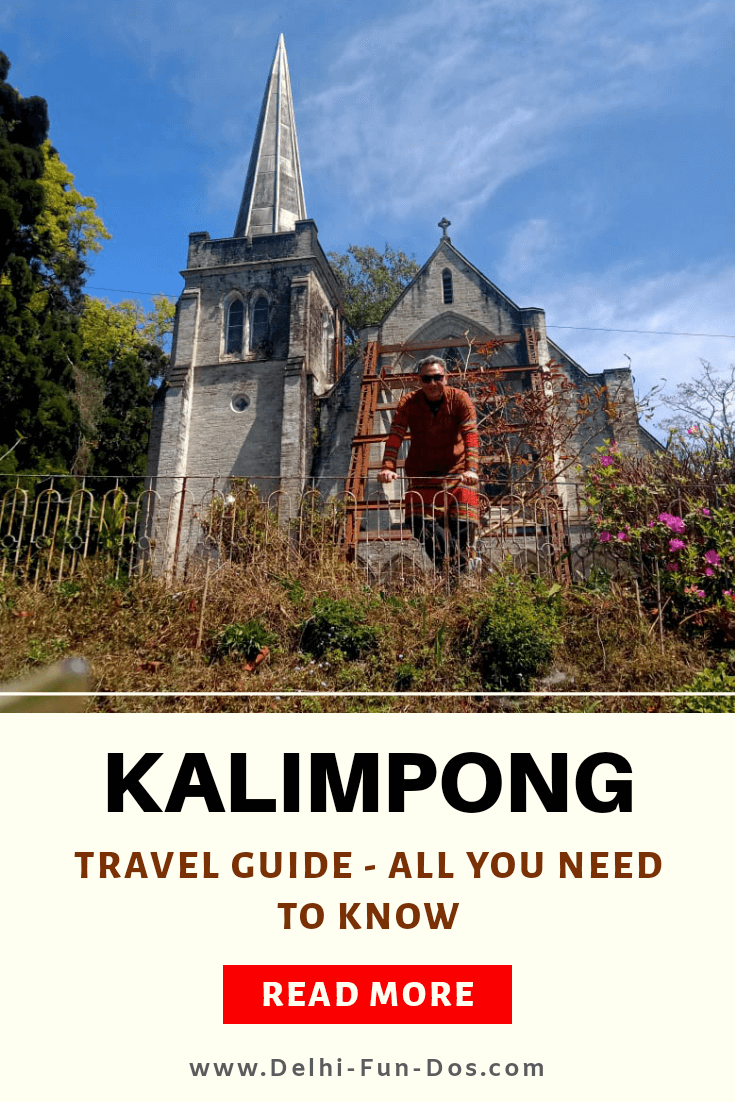

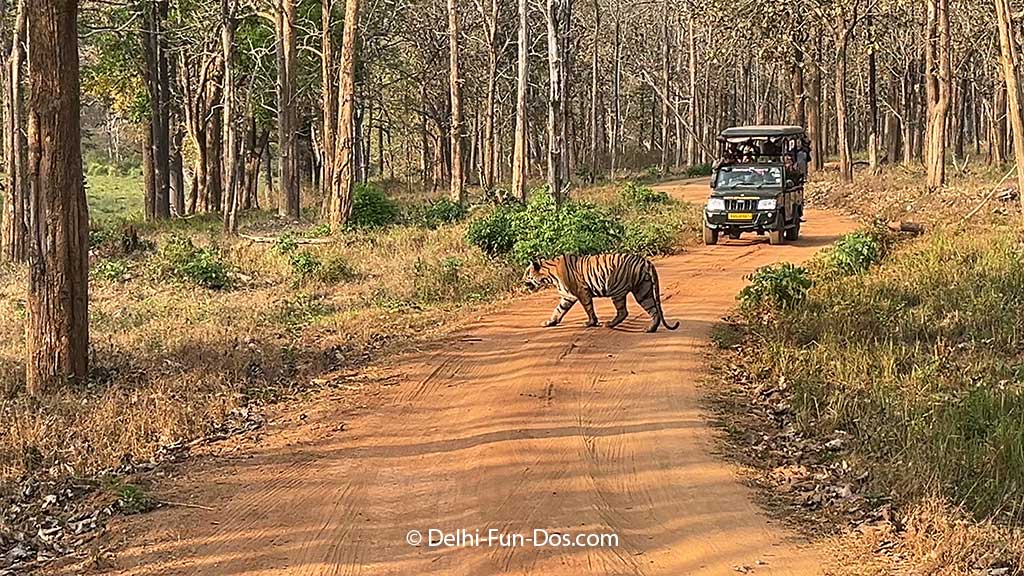
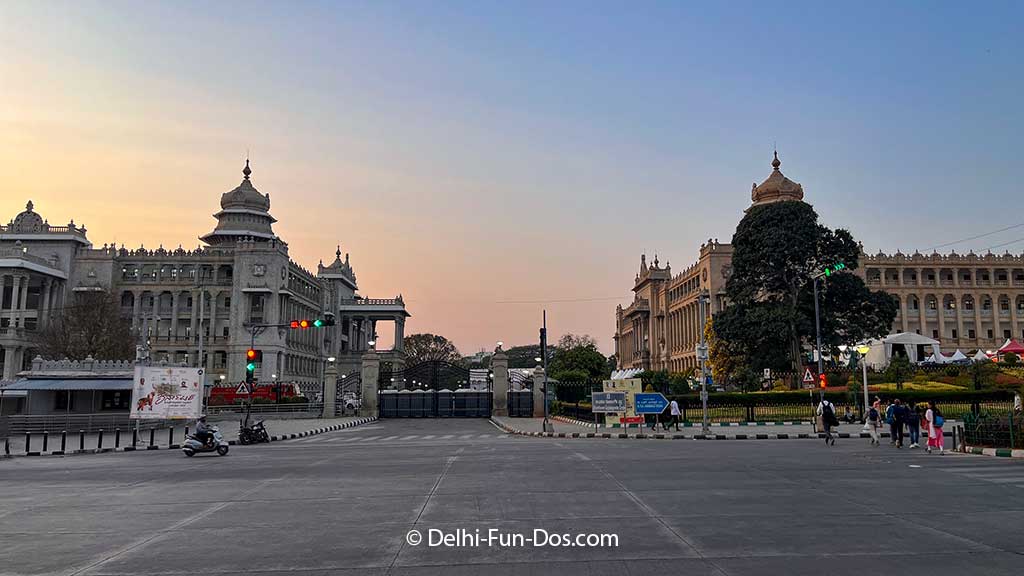
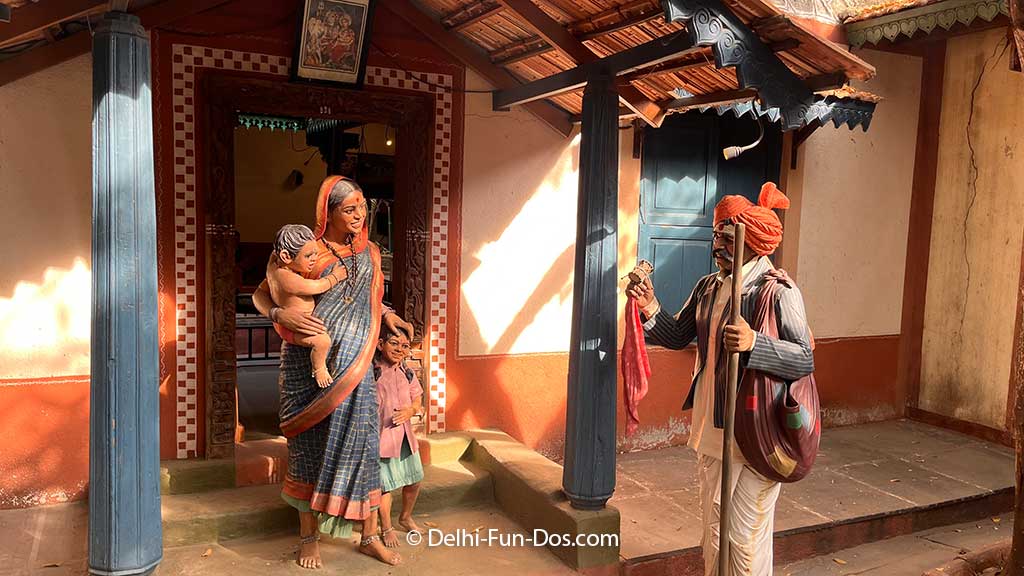
I absolutely love the mountains and I’ve been thinking of where I could travel after ISO with COVID. That’s so much on your in-depth article, I’m definitely adding Kalimpong to the list! 🙂
The hills are pretty clean.